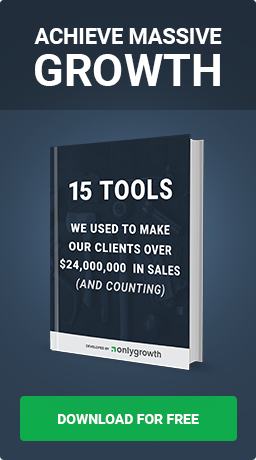Three Simple Techniques You Can Use To Convert Price Sensitive Shoppers
Oct 20th, 2016

Having trouble getting price sensitive shoppers to open their wallets?
The kind who feel giving up a dollar is akin to giving up their first born...
While various subcategories exist, consumer behavior research suggests you’ll likely encounter three types of buyers:
- Spendthrifts- love to spend because that’s what money is for
- Average Buyers- willing to spend if the purchase is a good investment
- Tightwads- savers that don’t particularly care to spend
These three types of buyers are differentiated by the level of pain they experience when making a purchase. Since tightwads experience the most pain, according to neuroscientists, it can be much harder to convert them.
How Big Is The Tightwad Slice?
Unconflicted or average spenders are the majority at 61%, tightwads make up 24% and spendthrifts 15%:
Source: HelpScout
Inside The Tightwad’s Mind
Before you can begin to convert your tightwads it makes sense to get inside their minds and better understand how they ultimately convert. Tightwads, the data from the pie chart suggests, spend the least but feel the most pain.
It may be tempting to ignore tightwads…
But since they make up approximately a quarter of your buyers it’s important to understand a couple of characteristics that may seem counterintuitive.
In research analyzing the mindset and behaviors of tightwads, the University of Pennsylvania’s Scott Rick discovered that the cost of an item and a tightwad’s income level are not always the overriding factors in a purchase decision. To the contrary, research suggests the biggest conversion barrier for tightwads is often the emotional pain the experience when they hand over their hard earned money.
The key then is to reduce the pain price sensitive shoppers feel when converting.
How so?
Illuminating the value a price sensitive shopper is getting in return for each dollar can help ecommerce merchants boost tightwad conversions. Below, are three proven techniques you can begin using to convert price sensitive shoppers:
How To Convert Price Sensitive Shoppers
Technique #1: Illuminate the Value Offered
A tightwad is always looking for justification when deciding whether to purchase. With this in mind it’s your job as a marketer to position your pitch in ways that emphasize the outsized value a buyer can expect from your product or service:
Case Study
Here’s exactly how Toyota subsidiary Daihatsu accomplishes this:
In order to sell a van and get price sensitive vehicle shoppers to actually spend their money, the vehicle manufacturer decided to cleverly tweak its marketing message by using humor to illustrate value:
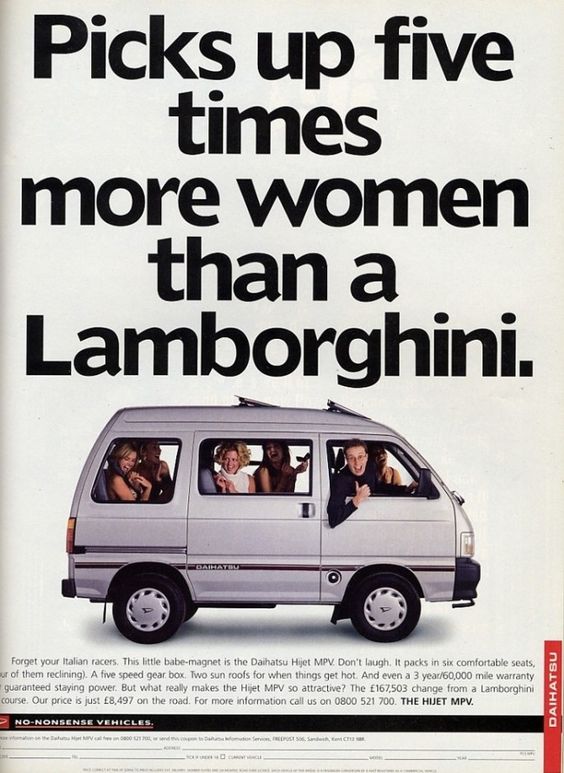
Source: Pinterest
The ad’s text targets price sensitive men likely to be attracted by sports cars that offer features and benefits materially outside their price range or that would cause the emotional turmoil that would likely come with actually purchasing a five or 6-figure sports car.
Specifically, the ad attempts to draw comparisons between a sports car and the van being touted and targets the importance a price sensitive consumer places on value by suggesting buyers can have everything a sports car offers, or even more, for a fraction of the price.
Humor + Value = Conversion
Technique #2: Bundle Related Products In Kits
Quick question for you...
Remember the last time you ordered some type of meal deal rather than buying an individual item off the menu?
It might have been at a fast food restaurant drive through, a hotel, or a boxed meal delivery service…
Here’s why you bought more than you may have been hungry for; combinations are attractive to value oriented consumers as they communicate the buyer is getting more for their money than they might had they purchased items individually.
Bundling products is especially effective when targeting customers on tight budgets. The psychology at work here is clear in that bundling marketing messages and packaging often communicates additional value a consumer will otherwise have to forgo if he or she chooses to purchase individual items.
Bundling has probably worked on you!
Remember the last time you went to the movies?
Unless you snuck candy and soda in underneath an oversized jacket- you probably spent more money than you may have wanted but were convinced to do so because of a bundle’s value proposition.
Movie theatres are masters at bundling!
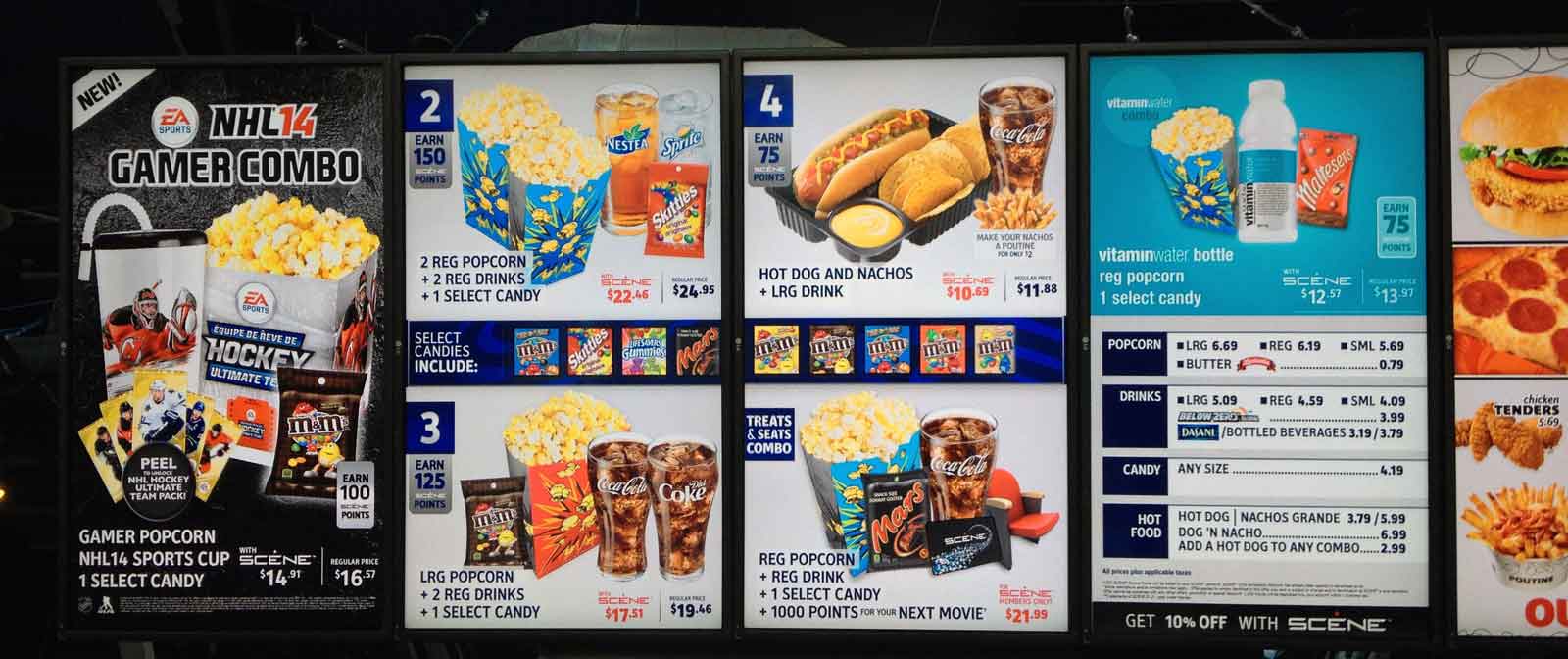
Source: Beyondcostplus
As the above image indicates, movie theatres position bundles alongside individual menu items and engage in arbitrage selling which can resonate with value conscious consumers and motivate them to actually spend more than they otherwise might.
The opportunity, as perceived by a price sensitive shopper, is actually two-fold; not only is he or she attracted by an opportunity to purchase additional snacks but also by the opportunity to acquire those snacks at a discount to individual item menu pricing.
ALERT: You don’t always have to offer a discount
Not interested in cutting prices and sacrificing margin for price sensitive shoppers but still interested in bundling?
It may not be a sacrifice you have to make.
In Consumption Effects of Bundling: Consumer Perceptions, Firm Actions, and Public Policy Implications, Duke University researchers Kathryn M. Sharpe and Richard Staelin argue that a bundled offering will often be viewed as a more valuable alternative to individual fast food purchases regardless of whether a discount is offered:

Source: Beyondcostplus
Importantly, price sensitive consumers often check individual prices against their budgets and weigh decisions accordingly. Bundling can provide a price sensitive consumer with the motivation necessary to make a purchase they had not originally intended, even without a discount, as he or she may rationalize that pulling from next week or next month’s budget is a smart move to realize the value perceived in the bundle.
In other words, bundling can help you overcome a tightwad’s propensity to calculate the impact a purchase has on their budget.
Ultimately, a price-sensitive shopper will likely see value in a bundle that:
- Saves them pain or time when calculating price versus budget
- Saves them money via discounts or allows them to perceive greater value without discounts
BONUS: Be sure to split test discounted bundles vs. non-discounted bundles to be sure you’re not needlessly sacrificing margin.
Technique #3: Reframe Product Value/ Payment Options
This technique offers the best of both worlds; value and bundling.
You can materially increase your chances of converting price sensitive consumers by reframing your offering’s value proposition by positioning it alongside multiple price bundles. Besides boosting conversion rates, this technique can also help you increase AOV (average order value) and CLV (customer lifetime value).
This is exactly how Bryan Harris, a digital marketer who helps entrepreneurs grow their email lists, generated more than $400,000 in sales from a recent information products launch. Instead, offering a single option, Harris offered his list building course through three separate frames:

Image via: Videofruit
Increasing from two to three the number of payment options, and this the value offered in each, Harris was able to raise the price of his premium option on the second launch which yielded an additional $102,000 in additional margin he would’ve left on the table had he only offered two pricing packages:

Image via: Videofruit
Well known companies use this technique as well...
When Netflix began investigating ways it might adjust its payment plan to improve company fundamentals, it looked into whether asking people to pay per movie might not be the best option for price sensitive consumers. Each movie watched resulted in additional financial obligations and emotional pain for this category of consumers.
To assuage both the financial and emotional issues of an a la carte movie menu, Netflix introduced monthly payment plans that allowed unlimited access to movies. To a price sensitive consumer, an unlimited monthly plan may be perceived as a better deal that not only offers additional value but also subconsciously allows them to avoid the emotional pain of paying for each individual movie they watch:
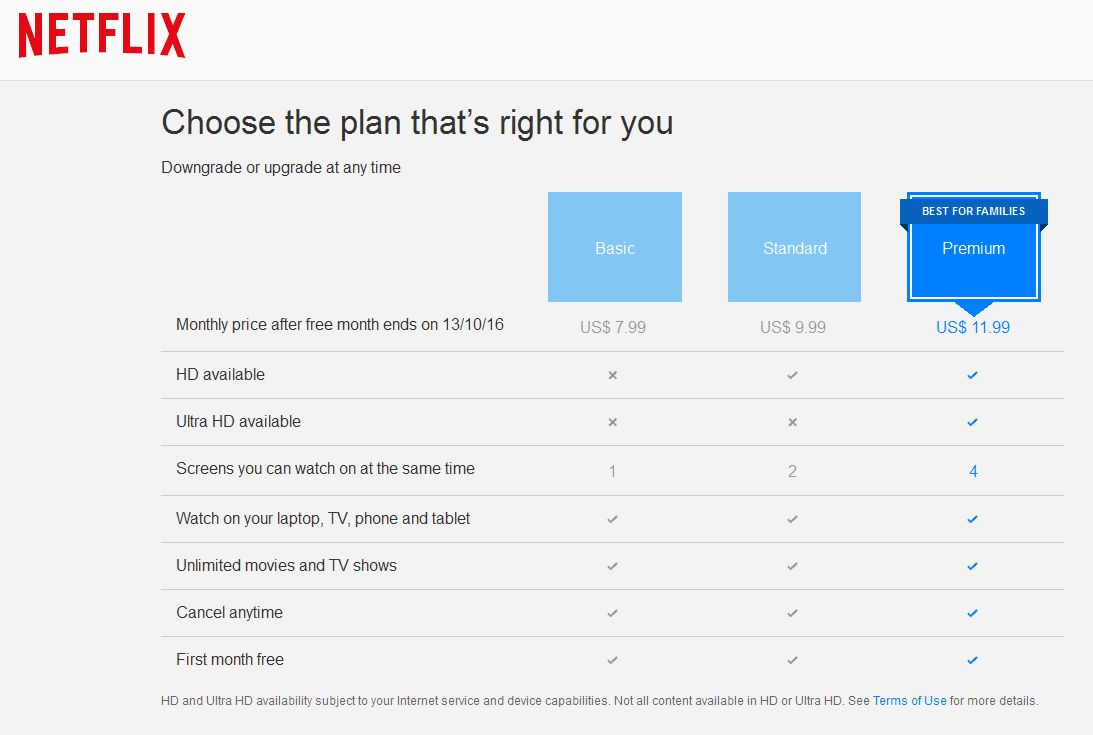
Source: Netflix
Price sensitive consumers often value control as well. Offering multiple bundles, as Netflix does here, can help give price sensitive consumers a sense of control they might otherwise not have if presented with just a single bundle. As evidenced by the company’s subscriber growth recently, it also provides the company a way to charge more for additional services like movies streamed in high definition.
The Takeaway:
Netflix offers price sensitive consumers a compelling reason to spend a bit more while simultaneously feeling as if they’re getting additional value from the bundle they choose.
Final Thoughts
Converting your price sensitive consumers begins with better understanding exactly who they are and how they make purchasing decisions. Price sensitive consumers, or tightwads:
- Are reluctant to spend their money
- Experience emotional pain when they do
This doesn’t necessarily mean you have to discount and sacrifice margin though. Instead, consider leveraging the three techniques outlined in this post to increase conversions and average order values:
- Highlight your offering’s value vs. competitors
- Bundle items together to increased perceived value
- Reframe value by offering multiple pricing bundles
It might be more difficult to convert price sensitive shoppers but doing so by creatively accentuating the value you offer can pay off by turning tightwads into loyal customers with higher lifetime values.


